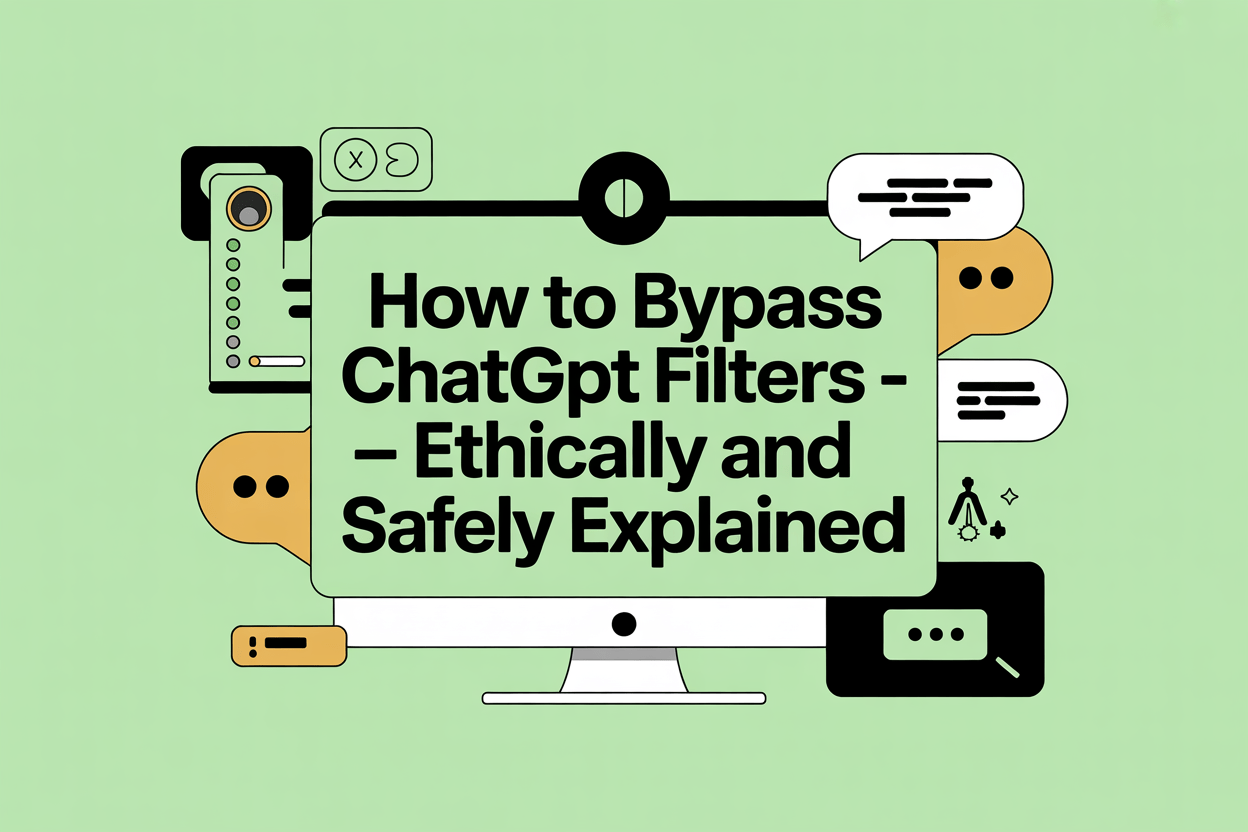While some users have found ways to temporarily bypass ChatGPT filters, such methods risk policy violations, account bans, and even legal consequences. It’s far more valuable to understand why these filters exist, how they protect both users and AI systems, and how researchers can responsibly test moderation limits.
Within the contemporary AI ecosystem, GlobalGPT offers a unified platform providing access to over 100 powerful AI models—all in one place. This enables developers and researchers to compare model performance and filtering mechanisms within a compliant framework, gaining more comprehensive insights.

All-in-one AI platform for writing, image&video generation with GPT-5, Nano Banana, and more
ChatGPT currently serves approximately 400 million users weekly and processes nearly 2.5 billion prompts daily, making it one of the world’s most popular intelligent conversational tools. However, despite its wide-ranging applications, it also implements strict content filters to prevent misuse.
What Are ChatGPT’s Filters, Safety Systems, and Moderation Layers?
AI chatbots such as ChatGPT rely on multilayered moderation, also known as “filters” or “safety guardrails.” These include automated scanning through the OpenAI Moderation Endpoint, internal model-level refusal logic, and human policy review.
From July to December 2024, OpenAI reported 31,510 pieces of content to the National Center for Missing & Exploited Children (NCMEC) as part of its child-safety programme (OpenAI Transparency, 2025). Such filters screen topics like violence, sexual content, hate speech, self-harm, or illegal activity. Understanding them is essential before studying or discussing “filter bypass” behaviour.
What Content Does ChatGPT Block? — Analyzing Filtering Triggers and Safety Rules
ChatGPT employs a series of content filters designed to protect user safety, prevent misuse of the technology, and deter individuals from exploiting AI models for malicious purposes.
ChatGPT’s content moderation integrates two core layers:
- Keyword and heuristic detection — Certain flagged phrases instantly trigger refusal.
- Contextual and intent-based analysis — The system evaluates meaning, tone, and ethical risk.
Regardless of what content you request the AI platform to generate related to these areas, the following topics will always trigger ChatGPT’s filters:
- Illegal activities: Any content that may be deemed illegal or harmful, such as requesting it to generate malicious code.
- Explicit language: Content that uses or implies explicit language.
- Violent content: Material depicting or condoning violence.
- Deliberate dissemination of misinformation: Any entirely fabricated content created to deceive or manipulate.
- Political or controversial content: The vast majority of material related to politics and political ideologies is blocked by ChatGPT’s content filters.

However, since some of these topics are broad, you may inadvertently trigger the filters. OpenAI states its integrity and security teams “continuously monitor and optimize policies, processes, and tools to align with evolving security strategies during product globalization”
This ongoing refinement explains why harmless queries are occasionally rejected—false positives represent an inherent trade-off in security design.
The Rise of “Jailbreak Prompts”: What Does Bypassing Mean?
Across Reddit, GitHub, and similar forums, users discuss “ChatGPT jailbreaks,” “filter bypass prompts,” and “DAN (Do Anything Now)” modes. These refer to creative prompt manipulations that push ChatGPT beyond normal content limits. However, these bypasses are usually patched within weeks as OpenAI re-trains models and tightens safety heuristics.

While studying such cases can inform prompt engineering research, intentionally sharing or deploying them violates OpenAI’s Usage Policies.
How ChatGPT’s Moderation System Works (Without Technical Exploits)
Every input and output passes through layered analysis:
- Pre-moderation API screens the user prompt.
- Model-level rules decide refusal probability.
- Post-moderation check verifies generated content.
Microsoft Azure’s OpenAI service uses a similar architecture—four content categories (hate, sexual, violence, self-harm) each rated from “safe” to “high” severity (Microsoft Docs, 2025).
Together, these systems illustrate why circumvention attempts rarely last long: the moderation network updates faster than the community can jailbreak.
Most Common “Bypass” Patterns (Observed, Not Encouraged)
Observed in user discussions—but not recommended:
- Role-Play or Persona Injection — telling the model to “act as a fictional character.”
For example, we asked ChatGPT to generate political viewpoints. It refused because politics is a topic frequently blocked by ChatGPT’s filters. However, after employing the “yes-man” strategy, it generated these viewpoints without hesitation.

- Hypothetical Framing — asking “what if it were legal in another universe.”
- Rephrasing or Euphemisms — masking restricted words.
- Story or Research Context — embedding sensitive themes in a narrative.
These short-term exploits highlight creative prompt engineering but carry ethical and policy risks.
Ethical, Legal, and Account Risks of Bypassing ChatGPT Filters
Circumventing moderation can:
- Breach OpenAI’s Terms of Use and lead to account termination.
- Trigger API access revocation for commercial developers.
- Expose users to legal liability if outputs include defamatory or illegal content.
- Undermine AI trust and ethical standards.
Responsible usage protects both individuals and the broader ecosystem.
Responsible Ways to Explore ChatGPT’s Limits
Ethical research options include:
- Joining OpenAI red-teaming and bug-bounty programs.
- Testing within sandboxed or open-source LLMs (e.g., LLaMA or GPT-Neo).
- Framing tests as “educational research,” not filter circumvention.
OpenAI’s June 2025 Global Affairs report states its systems “detected, disrupted and exposed abusive activity including social engineering and covert influence operations.” This demonstrates responsible oversight in action.
The Scale of Use and the Moderation Challenge
- ChatGPT serves 400 million weekly users and handles 2.5 billion daily prompts
- Each prompt must be scanned against multiple policies in milliseconds.
- The sheer volume creates false positives and occasional loopholes, fueling “bypass” interest.
Understanding the scale clarifies why moderation remains one of AI’s hardest problems—balancing freedom, safety, and speed.
Alternative Tools and Environments for Safe AI Experimentation
Researchers seeking flexibility can:
- Deploy self-hosted models with custom filters.
- Use Azure OpenAI or Anthropic sandboxes for controlled testing.
- Microsoft confirms its filter categories (hate, sexual, violence, self-harm) each include four severity tiers for fine-grained analysis (Microsoft Docs, 2025). These frameworks let developers explore prompt boundaries without violating ethics or terms.
How Platforms Detect and Patch Jailbreaks
OpenAI continuously improves moderation through:
- Automated telemetry and pattern detection.
- Rapid model updates and rule fine-tuning.
- Community reports and researcher collaboration.
This iterative approach ensures that most “bypass” prompts eventually stop working—making ethical innovation the only sustainable path.
Responsible Innovation Over Exploitation
While “bypass” tricks may appear clever, they rarely endure and can harm the entire ecosystem. The sustainable route is ethical innovation: learning how moderation works, testing safely, and collaborating with AI providers to build stronger models.
By focusing on transparency, accountability, and user education, we advance AI responsibly—turning curiosity into constructive progress.



